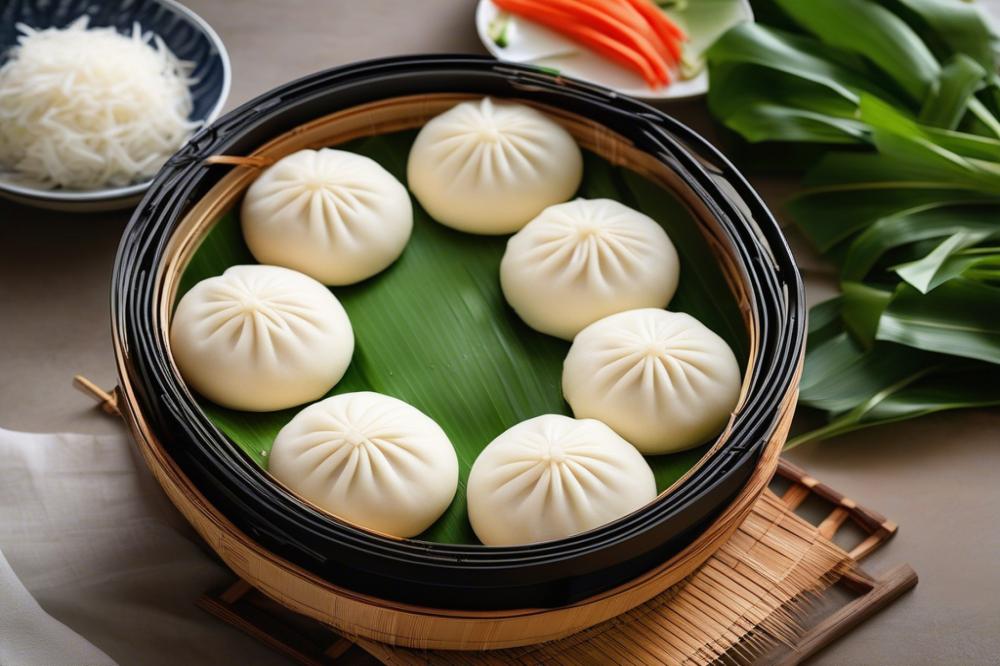Introduction
recipebix.com/vietnamese-fried-fish-cakes-cha-ca-recipe“>Bánh Bao is a beloved dish in Vietnamese cuisine known for its fluffy texture and delicious fillings. This dish has roots that stretch back through history, blending influences from various cultures in Asia. Steamed pork buns, often referred to simply as “bao,” are enjoyed by many and hold a special place on the dining table.
In the world of Asian food, similarities abound. Various countries have their versions of steamed buns, each with unique flavors and ingredients. For instance, dim sum offers an assortment of steamed delights, showcasing the versatility of this cooking method. Within the Vietnamese culinary landscape, the combination of spices and herbs adds a distinct character to homemade buns that stand apart from their counterparts.
Preparing these savory buns allows families to come together. Cooking Bánh Bao is both an art and a science, as achieving the perfect balance of dough and filling takes practice. The process often involves sharing recipes passed down through generations, creating a connection to tradition and culture. Finally, enjoying these pork buns can be a communal experience, as they are often shared among friends and family in gatherings.
What is Bánh Bao?
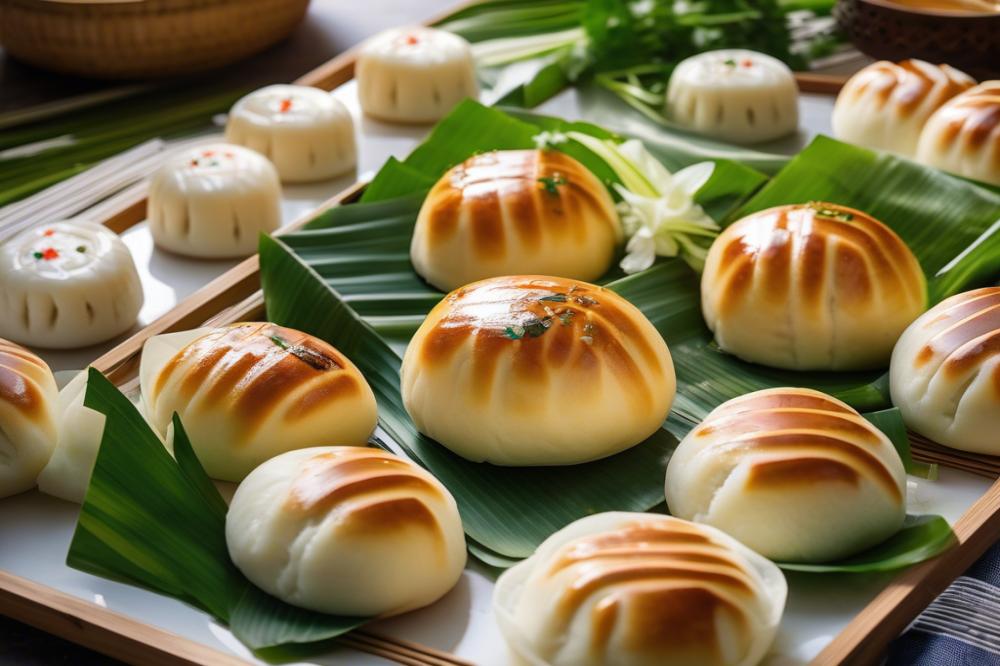
Bánh Bao are soft, fluffy steamed pork buns popular in Vietnamese cuisine. These savory buns are filled with seasoned pork, often combined with mushrooms or eggs. The dough is made from a rice flour mixture, which gives it the light texture. When cooked, it turns pale and glossy, making them look appetizing. The steaming process makes them moist and helps the fillings stay juicy.
History and cultural significance
The origins of Bánh Bao trace back to China, where similar steamed buns known as bao originated. Over time, they made their way to Vietnam, where they adapted to local tastes and ingredients. In Vietnamese culture, these buns are more than just food; they are often enjoyed during special occasions and celebrations. They symbolize family gatherings and sharing meals together. Streets in Vietnamese cities often have vendors selling these warm buns, making them a beloved comfort food.
Comparison to other types of buns
Many people often compare Bánh Bao to other types of buns like bao and dim sum. Bao, which is mainly Chinese, comes in various fillings and sizes. Dim sum is a broader category of bite-sized dishes served in steamer baskets, often enjoyed with tea. While all these steamed buns share similarities, Bánh Bao stands out because of its distinct fillings and flavors. Homemade versions allow for personalization of the stuffing. Each type of bun carries its own cultural stories and cooking techniques within the vast world of Asian food.
Ingredients and Cooking Instructions
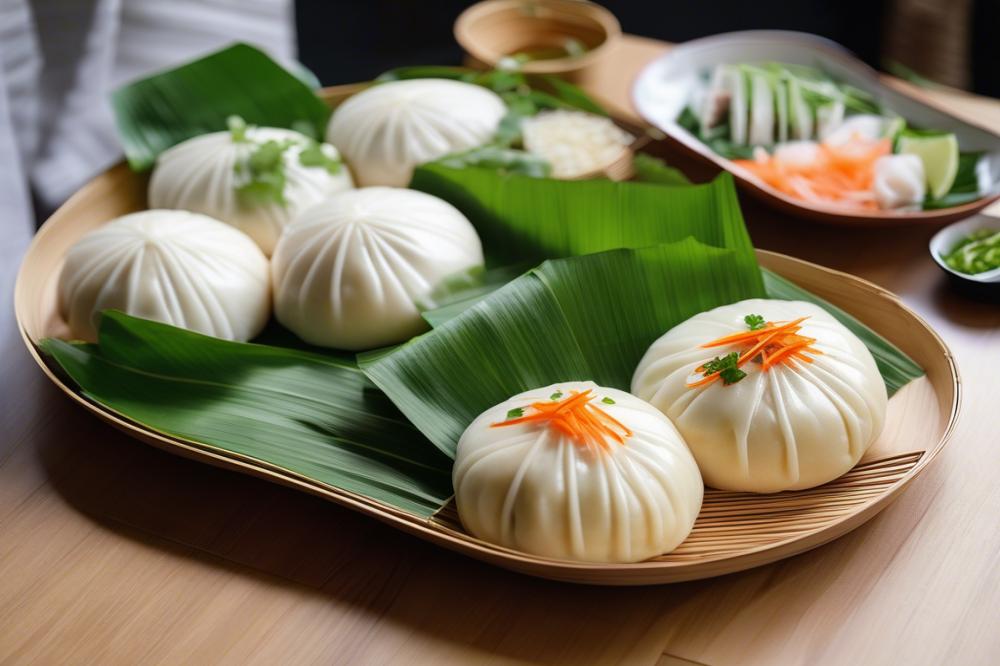
Detailed Ingredients List with Quantities
When preparing homemade Bánh Bao, gather the following ingredients:
- 500g all-purpose flour
- 200ml water
- 2 packets of instant yeast
- 1 tablespoon sugar
- 1 teaspoon salt
- 300g ground pork
- 1 tablespoon soy sauce
- 1 tablespoon oyster sauce
- 2 green onions, chopped
- 1 teaspoon sesame oil
- Optional fillings (e.g., mushrooms, quail eggs)
Cooking Instructions
Preparing the Dough
Start with the dough. In a large bowl, combine the flour, sugar, salt, and yeast. Gradually add the water while mixing. Knead the mixture until it becomes smooth and elastic. This might take about 10 minutes. Cover the bowl with a damp cloth, allowing the dough to rest for about an hour. It should double in size.
Preparing the Filling
Next, focus on the savory filling. In a mixing bowl, combine ground pork, soy sauce, oyster sauce, chopped green onions, and sesame oil. Mix thoroughly to blend the flavors. If you want to add other ingredients like mushrooms or quail eggs, now is the time to incorporate them.
Assembling the Buns
Once the dough has risen, punch it down to remove air. Divide the dough into small pieces, each about the size of your palm. Roll each piece into a circle. Place a spoonful of the pork filling in the center of each circle. Carefully fold the edges over the filling and pinch to seal. Form a tight bun by rolling it slightly between your palms.
Steaming Process
Prepare your steamer while assembling the buns. Line the steamer basket with parchment paper to prevent sticking. Arrange the filled buns inside, making sure to leave space between them. Cover gently with a clean cloth. Bring water to a boil and steam the buns for about 15-20 minutes. They should appear fluffy and cooked through.
Nutritional Information
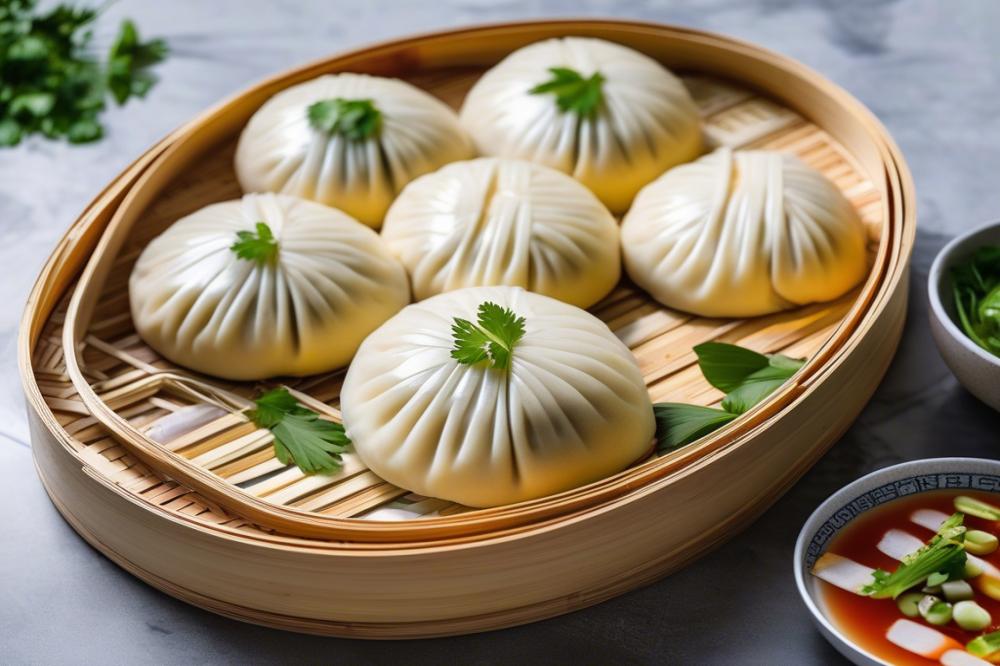
Understanding the nutritional values in a typical recipe for Bánh Bao helps in appreciating these delightful steamed pork buns. Each ingredient contributes its own set of nutrients. For instance, the flour used serves as a rich source of carbohydrates, providing energy. Sugar adds a hint of sweetness but also calories. The pork, being the star of the filling, is high in protein, vital for muscle repair and overall health. Bok choy or mushrooms, often added for flavor and texture, are packed with vitamins and minerals.
Health benefits of homemade bao extend beyond mere taste. The lean protein from the pork can help in building and repairing tissues. Dietary fiber from vegetables like bok choy aids digestion, promoting gut health. Steamed buns are generally lower in fat compared to fried snacks, making them a healthier option. By using fresh ingredients, you can minimize preservatives, allowing for a cleaner meal that supports body wellness.
When serving these savory buns, portion sizes are important to consider. A typical serving might include two to three buns, depending on their size. It’s easy to enjoy them as part of a larger dim sum spread or even as a standalone snack. Keep in mind that moderation is key. Overindulging in any dish may not align well with overall dietary goals.
Creating homemade steamed buns offers a chance to control flavors and ingredients. Families can make adjustments based on personal dietary needs, like using ground turkey for a lighter filling instead of pork. Asian food holds a diverse array of flavors, and exploring these variations can lead to discovering unique tastes. This approach also empowers individuals to create dishes that reflect both health and pleasure.
Tips for Perfecting Your Bánh Bao
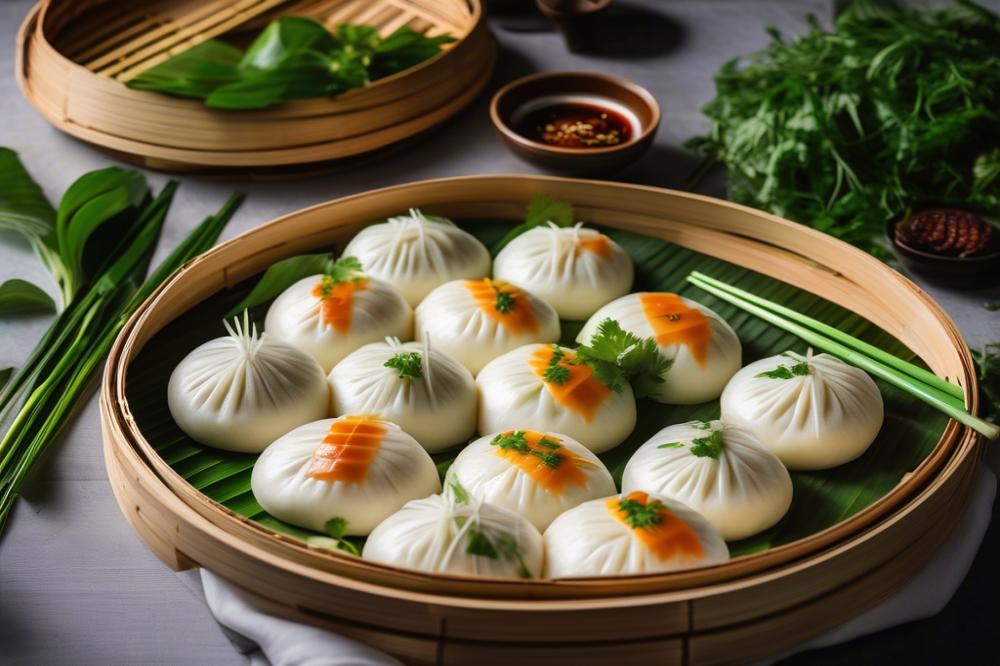
Techniques for Achieving Fluffy Steamed Buns
Start with high-quality all-purpose flour. A good flour makes a significant difference in texture. Yeast is also important. Make sure it is fresh to help the dough rise properly. When mixing your dough, knead until it is smooth and elastic. This stage is vital for creating nice air pockets. Allow the dough to rise in a warm place until it doubles in size. Patience is key here. Once the dough has risen, punch it down to release air before shaping the buns. Use a rolling pin to achieve an even thickness.
Common Pitfalls and How to Avoid Them
Many chefs struggle with dense buns. This often happens from under-kneading the dough. Always aim for a soft and pliable texture. Steaming for the right duration matters as well. Avoid removing the lid while cooking; this releases steam. Buns may turn out dry or hard if the steaming environment isn’t humid enough. Check your bamboo or metal steamer for holes that allow airflow. Also, don’t overfill each bun with filling. Leftovers won’t expand as nicely during cooking if they’re stuffed too much.
Variations of Bánh Bao for Different Tastes
Consider trying out vegetarian alternatives to the classic recipe. Mixed vegetables and tofu make flavorful options for those who avoid meat. Shiitake mushrooms add a hearty element. Sometimes, the addition of herbs like cilantro and green onions can enhance the filling. For the adventurous, experiment with sweet fillings, like mung bean paste or black sesame, to make dessert versions of steamed buns. This unique twist gives everyone a chance to enjoy homemade bao. If you prefer spicy flavors, consider adding chili paste to the pork mixture for a kick. There’s something for every taste in Asian food!
Serving and Enjoying Bánh Bao
Traditional Ways to Serve Bánh Bao
Serving steamed buns is a delightful experience in Vietnamese culture. Families often enjoy these savory buns during special occasions or family gatherings. Freshly steamed, they carry a warm, inviting aroma. Many people choose to serve them with a side of pickled vegetables. The bright colors of the pickles add a beautiful contrast to the soft, white bao. These pork buns can also be accompanied by fresh herbs like cilantro or mint for an extra layer of flavor. Each bite combines the richness of the filling with the delicate, pillowy dough, creating a satisfying sensation.
Popular Dipping Sauces and Accompaniments
Dipping sauces play an important role in enjoying steamed buns. A common choice is soy sauce mixed with a dash of chili oil. This combination provides a spicy kick that enhances the savory taste of the filling. Some prefer a sweet and tangy sauce made from vinegar and sugar, which balances the richness of the pork. Sriracha can be added for those who crave more heat. Besides sauces, fresh cucumber slices and crispy lettuce provide a refreshing crunch. These toppings contrast beautifully with the soft texture, creating an enjoyable eating experience.
Bánh Bao in the Context of Vietnamese Meals
In Vietnamese cuisine, pork buns often appear as part of larger meals. People might find them at dim sum restaurants, included in a variety of dishes. They can be served alongside rice and stir-fried vegetables for a balanced meal. During festive times, families prepare homemade versions to share with loved ones. The care put into cooking these steamed buns reflects a deep connection to tradition. Enjoying them with family can turn a simple meal into a celebration. With its rich flavors and cultural significance, the bun represents not just food but also the warmth of Vietnamese hospitality.
Wrapping Up the Bánh Bao Experience
Bánh bao holds a special place in Vietnamese culture. These steamed pork buns are more than just a snack; they represent the warmth of togetherness. Families often gather to enjoy these savory treats during celebrations and casual get-togethers. Each bite tells a story of tradition and love, connecting generations through food.
Trying your hand at making these delicious buns can be a rewarding experience. The recipe may seem daunting at first, but with practice, you’ll discover the joy of crafting each fluffy bun. Not only will it allow you to learn a new skill, but you’ll also get to share your creations with others. Imagine the smiles on faces as they savor your homemade version!
Cooking is about creativity and connection. Sharing food can spark conversations and strengthen bonds. When you make and serve steamed buns, you’re not simply feeding others; you are sharing a piece of yourself. So gather your friends or family, roll up your sleeves, and dive into the process. The joy of cooking together can be as fulfilling as the meal itself. Let the experience of making pork buns become a cherished memory for you and those you love.

